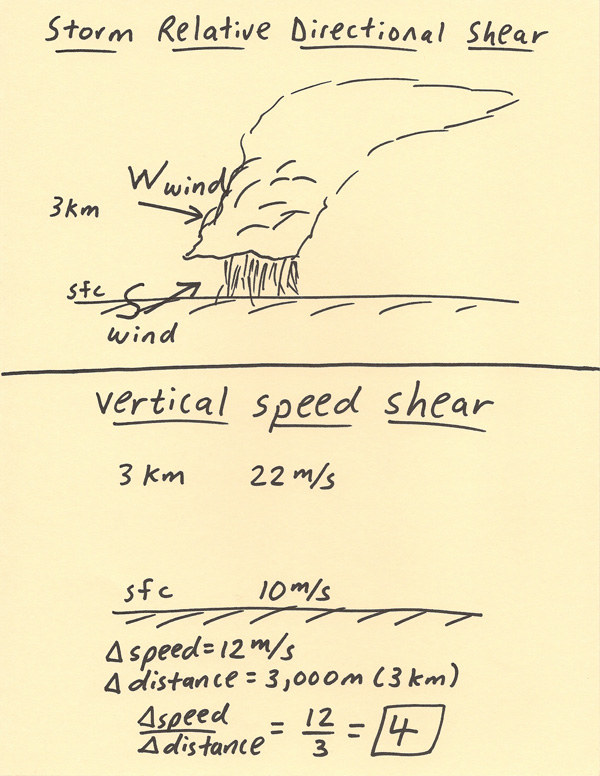
The shear environment has an important influence on how severe a storm will be. Directional shear as it relates to a thunderstorm is analyzed by how the wind direction changes with height. A change in wind direction with height will generate a twisting motion (vorticity). In tornado forecasting, generally the shear in the lower troposphere will be most significant to study. Thus, the shear from the surface to the 3 km level is important to study. The top diagram below shows an example of directional shear interacting with a storm. At the surface, wind is from the south while at the 3 km level the wind is from the west. This veering wind as it interacts with the storm generates storm relative directional shear. Storm relative means it is from the storm’s perspective. Vertical speed shear as it relates to a thunderstorm is analyzed by how much the wind speed changes with height between the surface and 3 km. In a thunderstorm environment, typically the wind will increase with height since there is less of an influence of surface friction aloft. A change in wind speed with height will also generate a twisting motion (vorticity). The bottom diagram below shows an example of speed shear interacting with a storm. The wind speed at the surface is 10 m/s while it is 22 m/s at the 3 km level. The calculation of vertical speed shear takes the difference between the surface and 3 km wind and divides this value by the 3 km distance. The change in wind speed is 22 m/s – 10 m/s = 12 m/s. This difference divided by 3,000 m = 0.004. In operational meteorology this value will be multiplied by 1000 and the units dropped. 0.004 * 1000 = 4 units of speed shear. Both directional and speed shear combine to produce horizontal vorticity. In a severe thunderstorm situation where tornadoes are a threat, typically the values of speed and directional wind shear will be high. Weather forecasters look at the shear environment when determining the severe thunderstorm and tornado threat.  |